NetSuite
Learn how to set up and configure your NetSuite account with Alloy
So you want to connect your NetSuite account to Alloy and start automating the most complex part of your tech stack? Well you've come to the right place.

To get started with our NetSuite integration, you'll need to enable what's called Token-based Authentication in NetSuite. Let's take a look at the steps to do so below.
Step 1: Create an App
Login to your NetSuite account as the Admin user.
Navigate to the Setup > Integration > Manage Integrations > New section of your NetSuite account.
You should see a list of any integrations you've previously created (if any).
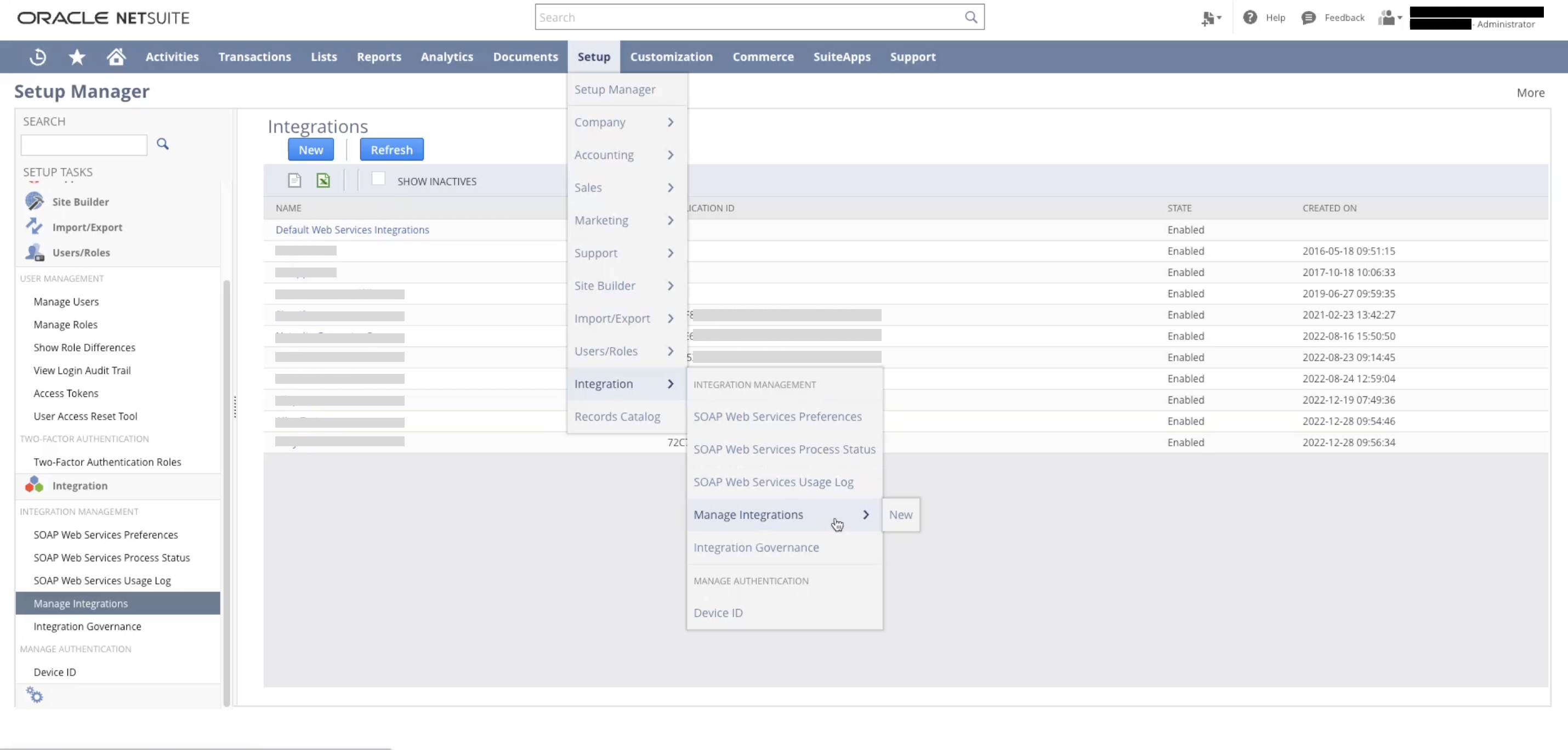
From here, you'll need to create the integration. Give the integration a name, set the state as enabled and select "Token-Based Authentication" as the Authentication Sublist.

Once you've created the app, you'll get a Consumer Key and a Consumer Secret. Make sure to store these in a secure location as we'll be using these at the end of this tutorial.
Step 2: Enable Web Services
Next, you'll need to enable Token-based Authentication in your NetSuite account. To do so, navigate to Setup > Company > Enable Features > SuiteCloud > then scroll down until you see SuiteTalk Web Services.
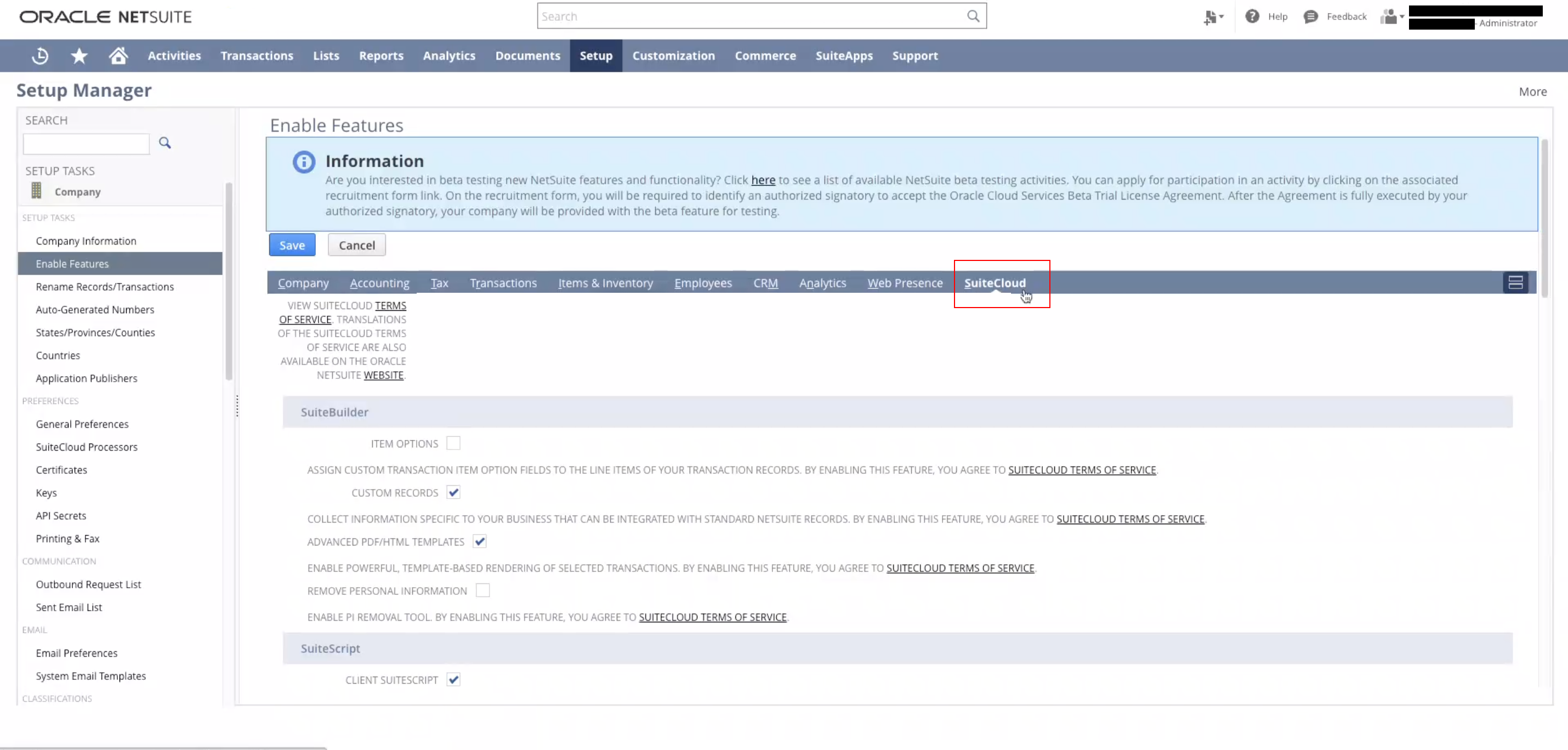
From here, make sure you select SOAP and REST web services.
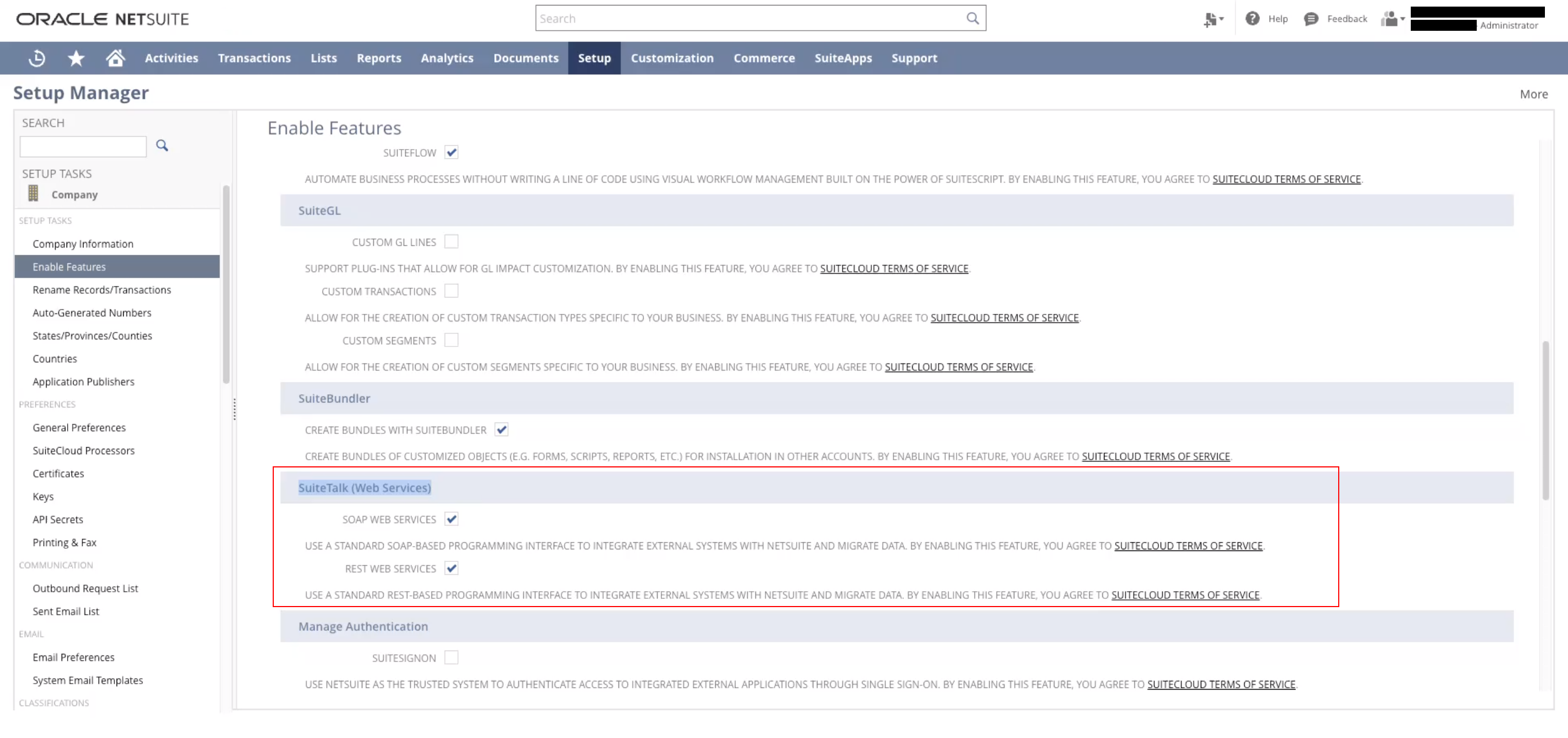
(Optional Step) Step 3: Create a Token Role
Optional Step
You ONLY need to do this if you would like to grant Alloy fine-grained access permissions. Note that if you do not supply all the required permissions Alloy may encounter issues.
If you are unsure what this means, skip to the next section or contact your account rep.
Now, you'll need to actually give your token permissions so that Alloy can use this token to automate things in your NetSuite account. Once more, navigate to Setup > Users/Roles > Manage Roles> New
From here, give your role a name and an Id.
Then, navigate to Sublist Permissions > Setup and select Full for the following permissions:
- Log in using Access Tokens
- Access Token Management
- User Access Tokens
- API Web Services
- Add any other permissions you expect Alloy to integrate with (for example, if you want Alloy to modify your Purchase Orders, be sure to add that permission).
Then, navigate to Permissions Sublist > Transactions and add Full for all permissions.

Step 4: Create Access Tokens
Lastly, navigate to Setup > Users/Roles > Access Tokens
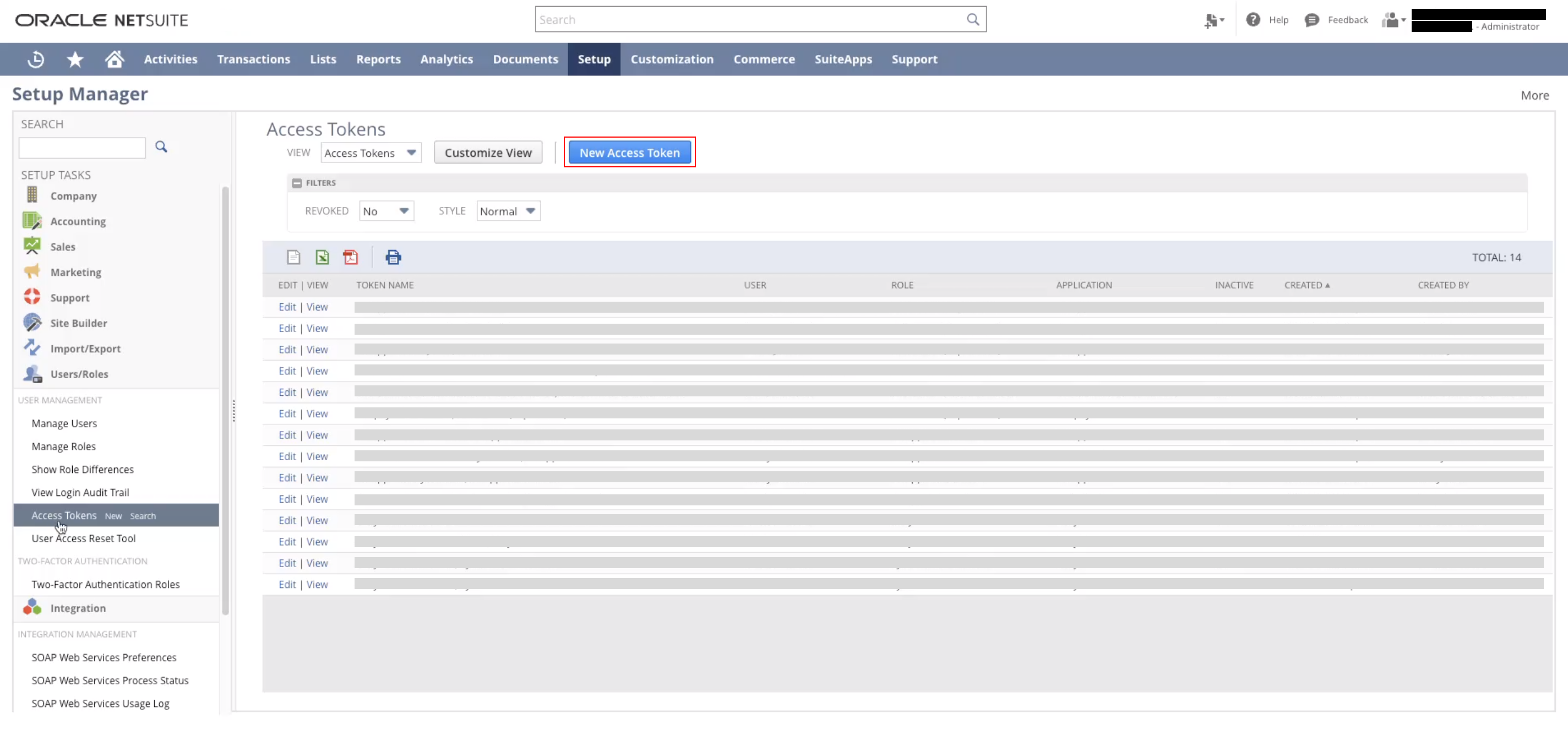
Click the New Access Token button as seen above.
Fill out the following fields
- Application Name: Select the integration created Step #1
- User: Select the "Alloy" employee we created in Step #4
- Role: Select System Administrator (or a specific role if you created one in Step 3)
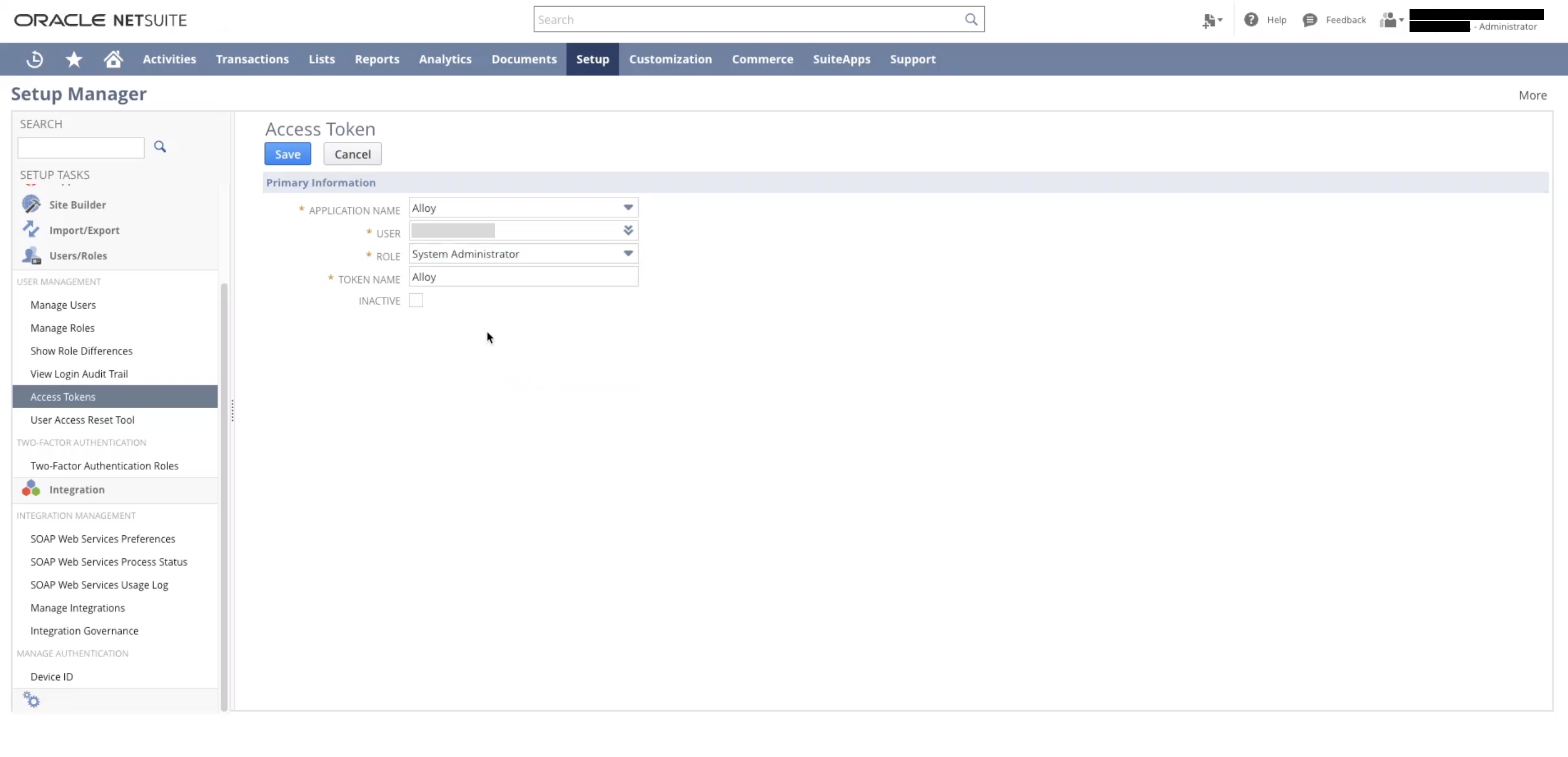
You'll be presented with a Token Id and Secret.
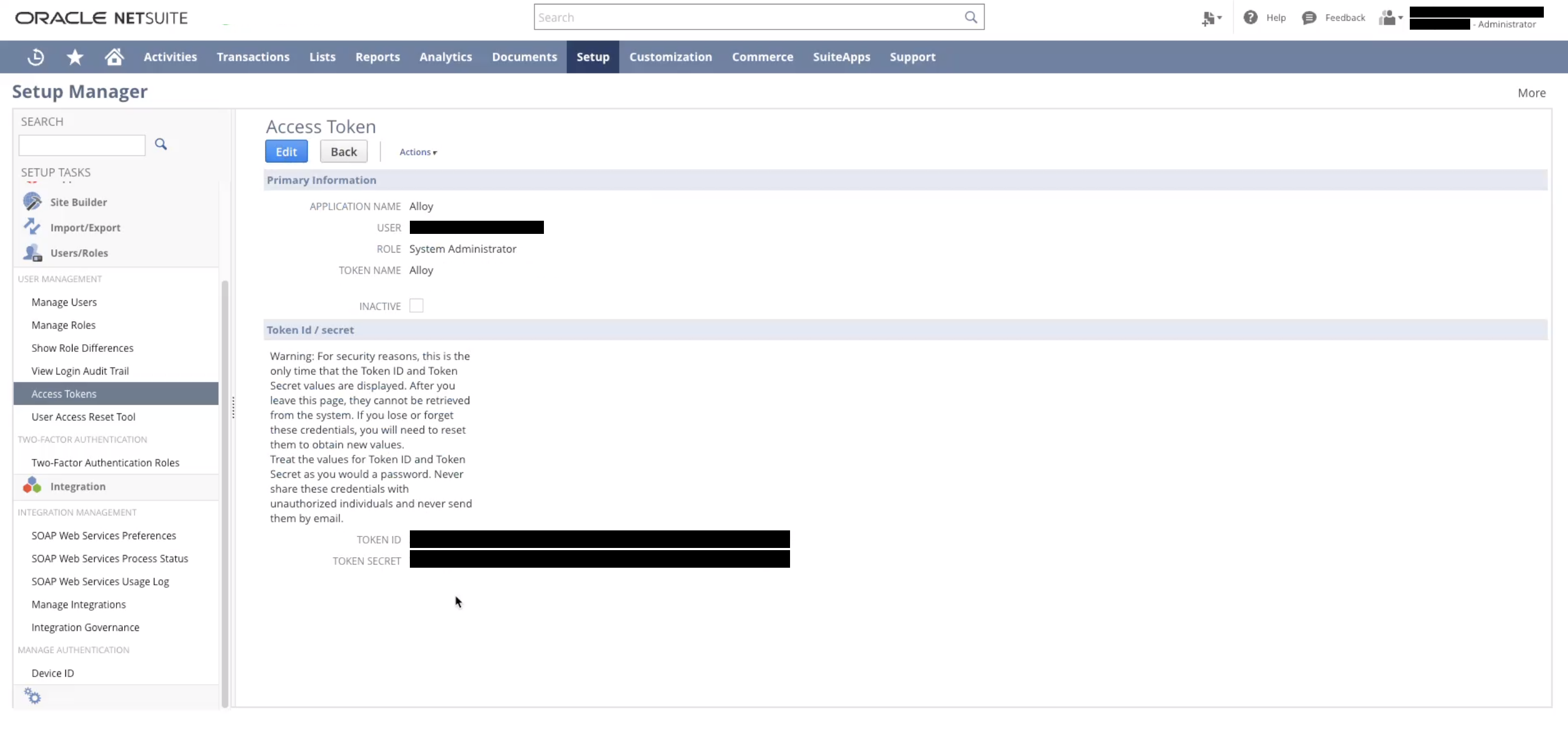
Step 5: Enable Token-Based Authentication
Lastly, you'll need to enable Token-Based Authentication.
Navigate to Setup and Under Enable Features make sure Token-Based Authentication is enabled as seen in the screenshot below. Be sure to save it once you've enabled it.
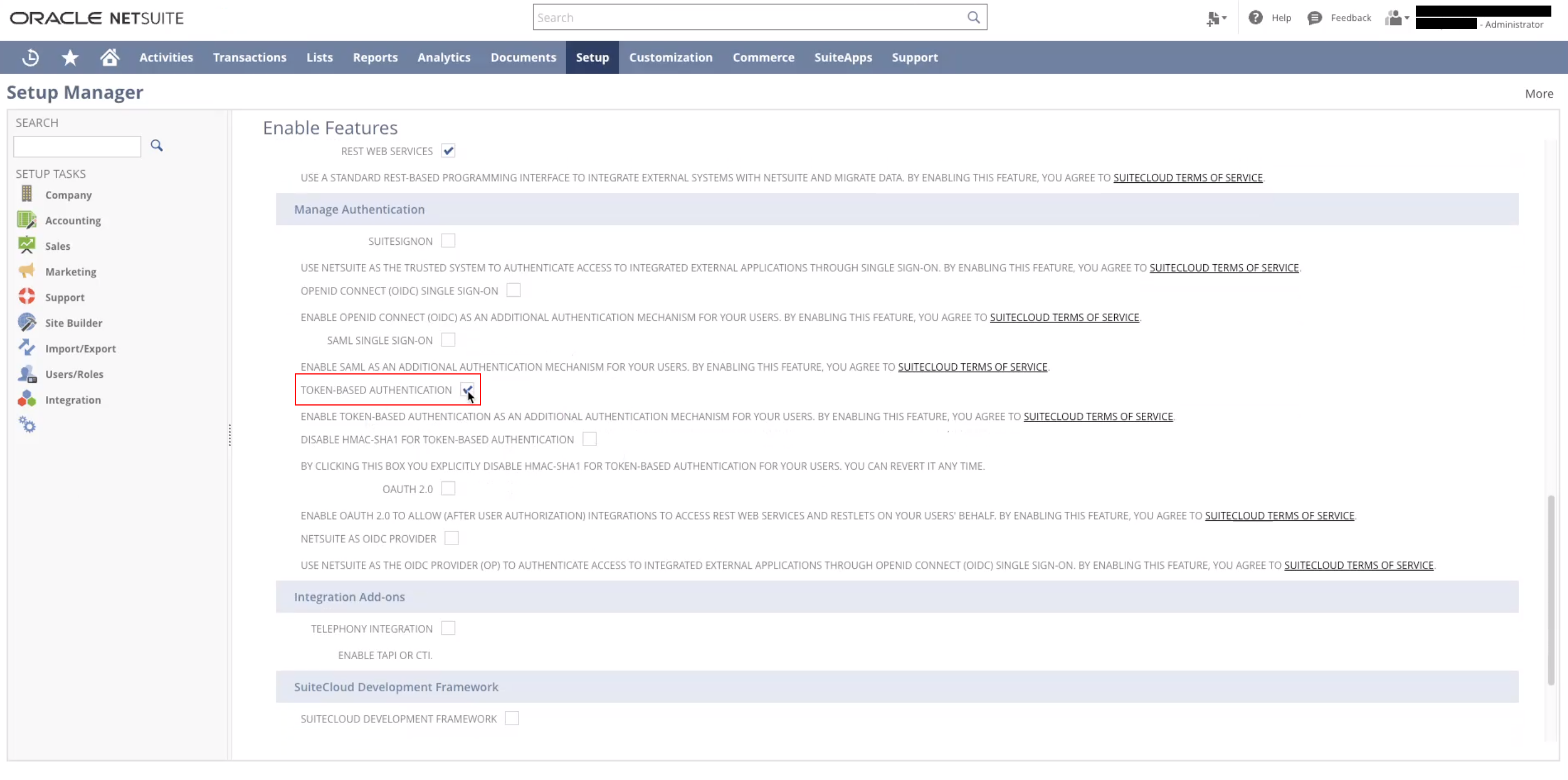
Wrapping Up
That's a wrap! You'll need these keys and the consumer secret and key from before. Use the keys you obtained from this tutorial when configuring NetSuite with Alloy.
To get the realm you can locate the 6 digit number in the URL (it should prefix app.netsuite.com).
Once you're ready, input the values in Alloy as seen below.
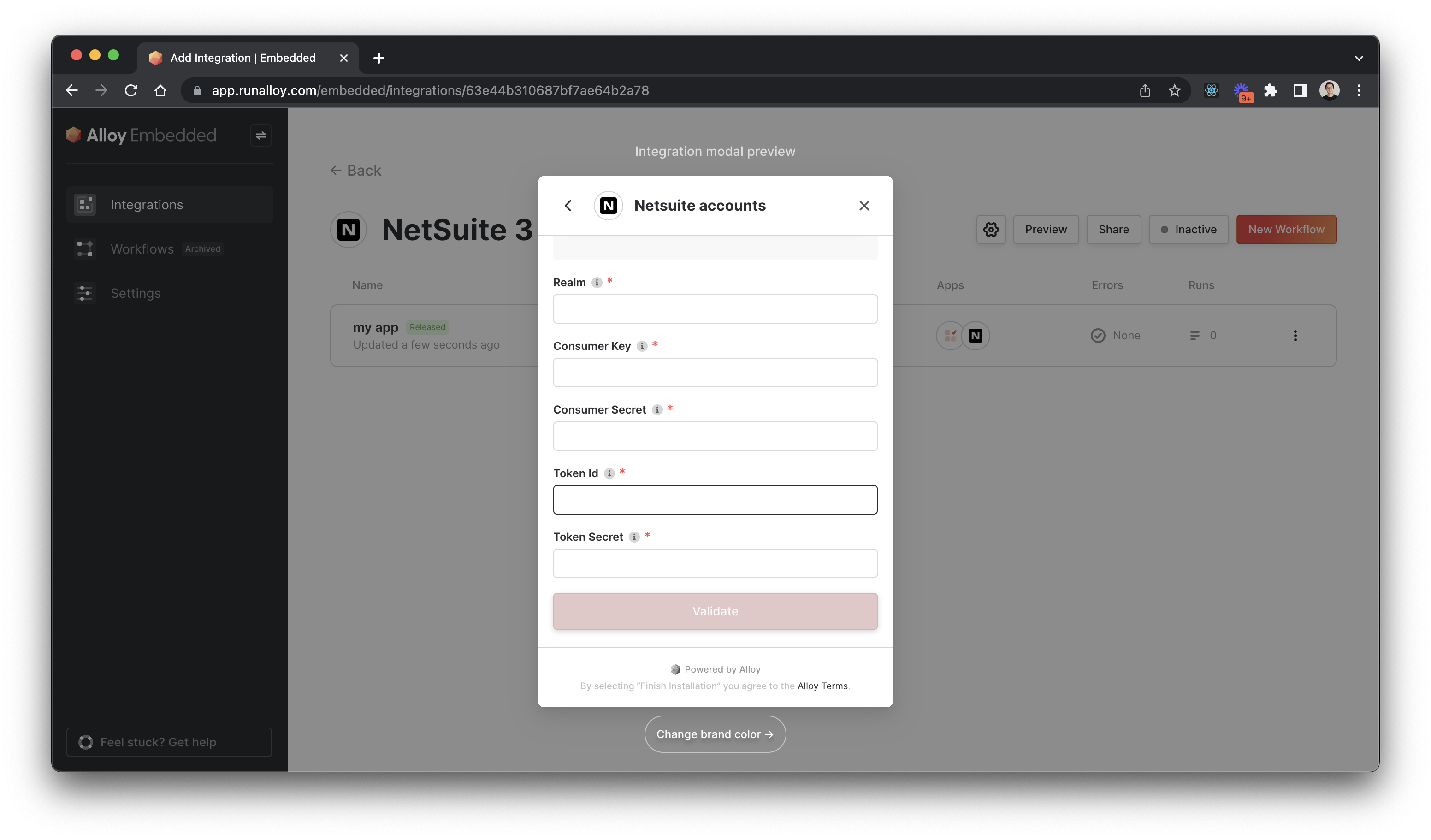
Updated over 1 year ago
